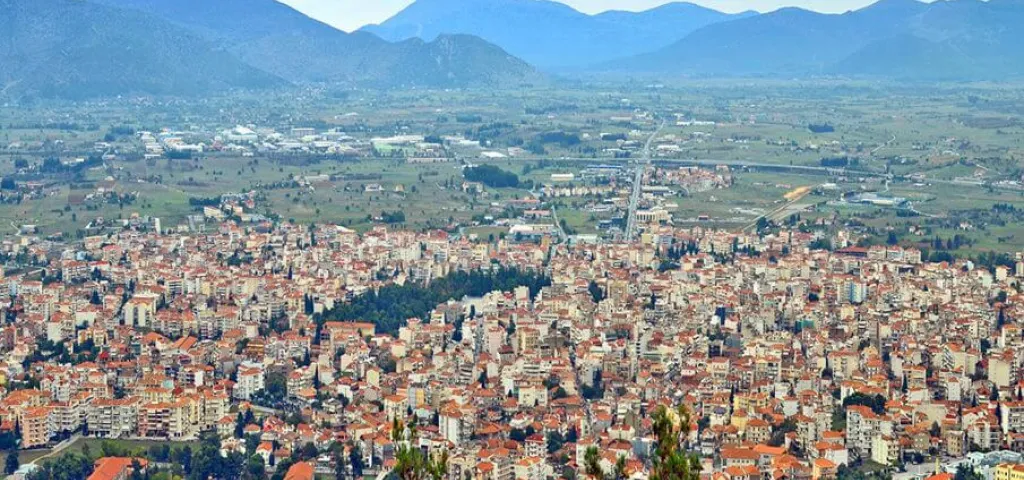
Tripolis is a city in the central part of the Peloponnese, in Greece.
Tripolis was established in the beginning of 14th century and until the end of 19th century it was called Tripolitsa (Dropolitsa). Many different invaders such as Venetians and Turks left their marks on the city. It was the former capital city of Morias and flourished during the period of Ottoman occupation.
It is the capital of the prefecture (with 22.500 inhabitants) built in the middle of a valley surrounded by Artemisio, Parthenios and Mainalo mountains. It is the administrative, economic, commercial and transportation center of central and south Peloponnese. Among the block of flats you will see preserved neoclassic buildings, traditional houses and springs.
It is the capital of the Peloponnese region as well as of the regional unit of Arcadia. The homonym municipality has around 47,000 inhabitants. It has many popular attractions, including Areos Square, Statue of Theodoros Kolokotronis, Church of Saint Basil etc. making it well worth a visit.
Because it is at the centre of the Peloponnese, Tripolis is a transportation hub. Corinth is 75 kilometres (47 miles) NE, Pyrgos 145 kilometres (90 mi) E, Patras 144 km (89 mi) NW, Kalamata 65 km (40 mi) SW, and Sparti 60 km (37 mi) S.
Tripoli is mainly accessed from Athens and the rest of Greece through the Corinth-Tripoli-Kalamata motorway, known as the Moreas Motorway (A7). An alternative route is the GR-7 which used to be the main highway to Tripoli before the construction of the motorway. The city is also accessed by GR-74 and GR-76 from Pyrgos and by GR-39 from Sparta.
Tripoli is home to the two largest Armed Forces bootcamps in Greece, one operated by the Hellenic Army and one by the Hellenic Air Force: the 251st Army Training Battalion and the 124th Basic Training Wing.
The headquarters of the University of the Peloponnese is in Tripolis and it comprises of nine (9) Schools and twenty two (22) Departments located in 6 cities (Tripolis, Corinth, Nafplion, Sparta, Kalamata and Patras).
City Sights
Archaeological Museum of Tripolis
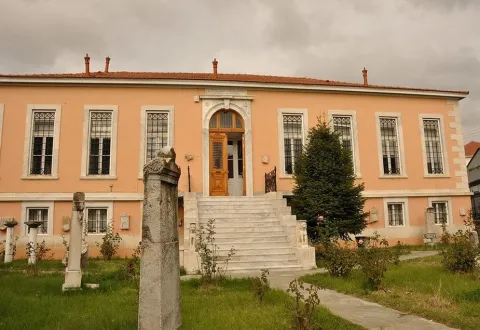
The Archaeological Museum of Tripolis is housed in a neoclassical building, located near Kolokotroni Square and was built in 1896 with plans by the architect Ernesto Ziller.
Originally it housed the hospital of Evangelistria.
It is two-storeyed and in its garden many finds of Arcadia are exhibited. Inside, eight rooms have been set up where more than 7000 finds from all over Arcadia are exhibited.
The Archaeological Museum of Tripolis houses a rich collection of more than 7000 objects in eight rooms, originating from the excavations held in various sites of Arcadia that allow visitors to learn about the history of the region and its evolution from the Neolithic period until Late Antiquity. Also in its garden many finds of Arcadia are exhibited.
It also operates as the center of the Archeological Services of Arcadia.
Tripolis War Museum Branch – War Museum
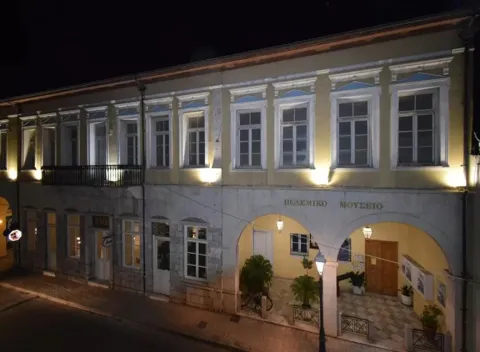
The War Museum Branch in Tripolis was inaugurated in January 2020. It is housed on the first floor of the Malliaropoulos estate, which is a listed building of the city and has been given to us by the Episcopacy of Tripoli. It was built in 1861 and is located in the central square of Tripoli, opposite the Metropolitan Church of Agios Vasileios. The visitor can find its entrance at 1 Ethnomartyron Street.
Through relics and artefacts within the museum space, the visitor is guided from the Greek Revolution of 1821, to the liberation after the German Occupation in 1944.
Metropolitan Church of Saint Basil (Agios Vasilios)
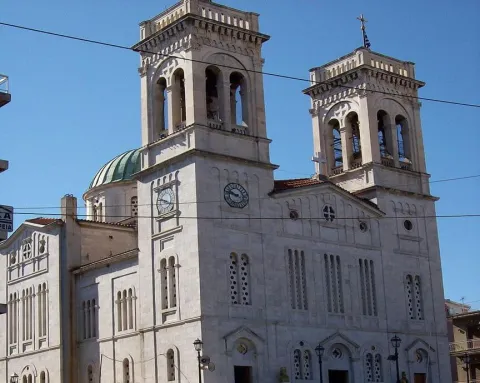
The Metropolitan Church of Saint Basil of Tripoli is located in the homonymous square in Tripoli, Arcadia.
It is the leading church of the city. It is the work of an unfortunately unknown architect, it was founded in 1855 and inaugurated in 1884, 29 years later.
It is a stone-built structure made of black limestone and covered with all-white Dolian marble.[2] The dome is covered with copper leaf from England. Many engineers and craftsmen worked until its completion. Among them craftsmen from Tinos. The iconostasis of the church is made of marble and was designed by Ernesto Ziller. The icon painting was done by Konstantinos Lokis, while the despotic icons are the work of Konstantinos Artemis.
Areos Square
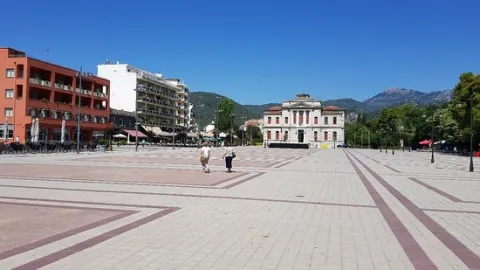
Areos Square was formed on the site where the serai stood. Its formation began in 1858 on the initiative of Sotirios D. Lagopatis and was completed after 1862 after property expropriations. It got its name from the high schools of the infantry battalion, which were held in that area. There is also the marble stele with the names of the heroes who played a primary role in the liberation of Tripoli and Greece from the Turks in 1821.
In Areos Square there are two important sights, the statue of Theodoros Kolokotronis and the Courthouse.
Statue of Theodoros Kolokotronis
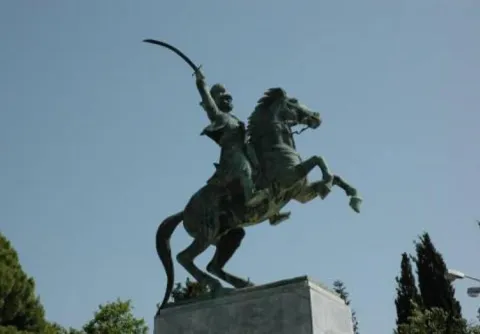
The equestrian statue of Theodoros Kolokotronis is located in Areos Square in 1971 and is the work of the sculptor Fanis Sakellariou. It is bronze and 8-9 meters tall.
The work was built in Florence and cost 1,500,000 drachmas including the cost of the pedestal.
Tripolis Courthouse
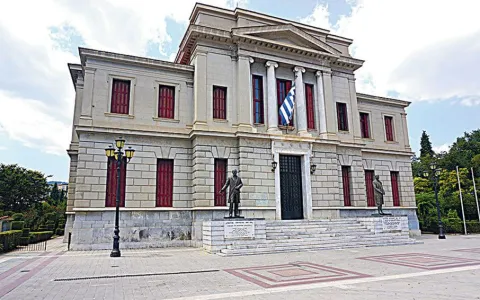
The Tripolis Courthouse is a preserved historical neoclassical building in the central square of the city, Areos Square, and since 1935 has housed the judicial services of the region.
The courthouse began to be built - in the place it was during the Turkish occupation - the sarai of Hursit Pasha - in 1914 but it was finished - due to financial difficulties - twenty years later, in 1934. The inauguration took place on January 13, 1935.
Its facade is adorned by two large bronze statues of the judges Polyzoides and Tercetis who left history in the city. It is a two-story stone building with a basement. It is one of the most beautiful buildings in the Peloponnese with crimson shutters and rich interior decoration.
The courtrooms are upstairs where the austerity of the decorative elements dominates. During the German occupation, the basement was used as a prison. Messages, drawings and names of prisoners have been preserved to this day.
Kostas Karyotakis House
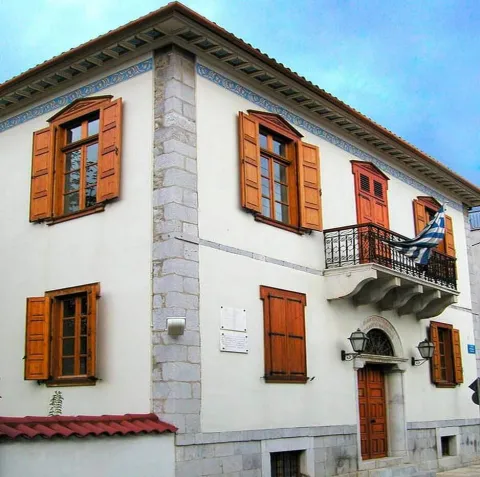
The Kostas Karyotakis House is a two-story neoclassical building and was the paternal home of the melancholic poet.
The building is a representative example of the neoclassical style with a relative eclecticism and borrowings from tradition.
The building belonged to Karyotakis' mother, Aikaterini Skayanni. The poet's house is located at the junction of Erythrou Stavros and Kostas Karyotakis streets, it was renovated in 1998 by the state and today houses the Rectorate of the University of the Peloponnese.
USEFUL INFORMATION
- USEFUL TELEPHONES
-
EMERGENCY CALL 112
FIRST AID 166
POLICE 100
FIRE DEPARTMENT 199
RED CROSS TRIPOLIS +30 2710 222550
FIRST AID STATION TRIPOLIS +30 2710 277386
TRIPOLIS REGIONAL HOSPITAL “THE EVANGELIST” +30 2710 371700
411 TRIPOLIS MILITARY HOSPITAL +30 2710 238172
TRIPOLIS PSYCHIATRIC HOSPITAL +30 2710 231396
TRIPOLIS BUS STATION (ΙΝFORMATION – TICKETS OFFICE) +30 2710 222560
TRIPOLIS RAILWAY STATION +30 27102 41220
RADIOTAXI ΤRIPOLIS 18300
RADIOTAXI KOLOKOTRONIS 18288 / +30 2710 226220
MALLIAROPOULIO THEATER +30 2710 233111 - TRIPOLIS HOTELS
-
MAINALON RESORT +30 2710 230300
GALAXY HOTEL +30 2710 225195
PALATINO ROOMS AND APARTMENTS +30 2710 241937
ANAKTORIKON BOUTIQUE HOTEL +30 2710 226545
ALEX HOTEL +30 2710 223465

